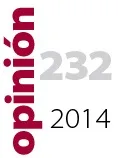Venezuela in crisis: the Chavista revolution under test

Juan Carlos Triviño
Researcher at Universitat Pompeu Fabra
April 7, 2014 / Opinión CIDOB, n.º 232 / E-ISSN 2014-0843
The countless images that have circulated in the international media portray Venezuela beleaguered by high inflation, scarcity, large demonstrations and harsh police response. All this suggests that the cycle started by Hugo Chavez in 1998 is languishing. The disappearance of his ubiquitous figure exacerbated the animosity between Chavismo and opposition groups while it worsened the socio-economic problems that his charisma and oil check book mitigated. However, the state of affairs compels us consider two questions: How did the country get into this crisis? And what does this crisis mean for Chavismo’s heirs and for opposition political parties grouped under the Democratic Unity Roundtable (MUD)?
The current crisis has as a departure point Chavismo’s own profile: a populist movement centred on Chavez’s figure and the Bolivarian Revolution (a mixture between socialist, nationalist and anti-neoliberal ideas with a capitalist touch). This meant for the process to be born under the premise that Chavez was the Revolution and the Revolution was Chavez. The concentration of power in his persona did not only affect the State’s institutionalisation but it also curtailed the possibility of emerging leaderships that could take over in his absence. This situation makes Nicolas Maduro, Chavez’s successor, a weak figure who is not convincing enough for Chavistas (as Chavez’s political allies and followers are known). Furthermore, Maduro’s power is diluted in a triumvirate of interests formed by himself, the powerful president of the Legislative Assembly, Diosdado Cabello, and the minister of foreign affairs, Elias Jaua.
As an additional factor, President Chavez’s failed promise of changing the oil-dependent model for a diversified one based on national production generated a difficult economic reality. After years of living on high oil revenues; the huge State structure based on a large bureaucracy, subsidies and social aid started falling apart. Besides, the development of a nationalising model coupled with the strangling of the private sector produced serious economic distortions. Nowadays it is more profitable to import goods than to produce them. This situation has led to scarcity of hard currency, an inflationary spiral and shortage of essential goods.
In conjunction with the economic hardship, street crime and violence are a scourge plaguing Venezuelans. Expression of this situation is the murder rate which jumped from 4.500 in 1999 to 24.700 murders in 2013 in a country of almost 30 million people. The causes point at the uncontrolled increase of guns on the streets, the weakening of the judiciary and the lack of cross-cutting policies against crime.
Against this background, the protest started by university students on February 2nd in the city of San Cristóbal, Táchira State, and the imprisonment of some of its leaders became the starting point of social mobilization. The organization of marches across the country calling for their release, the active support of certain MUD leaders to these marches and the fatigue of broad sectors of the population with the socio- economic situation became an explosive cocktail. Moreover, the death of protesters by members of the security forces and unidentified groups, the repression exercised by the National Guard and the government’s fiery speech further radicalized positions.
For Chavistas the current crisis entails a serious setback in the consolidation of their power in a post-Chávez era. Maduro’s election as president in April and Chavismo’s victory in the local elections in December 2013 implied the legitimization of the process. However, the magnitude of the protests, the use of force against them and Maduro’s difficulties to control the situation, confirm his government’s institutional weakness. Moreover, subtle criticisms from Chavista leaders, such as Cabello, on the management of the crisis or the disobedience of some members of public forces to executive orders make evident that the different currents within Chavismo can lead to potential spin-offs.
For the Democratic Unity Table (MUD) (the electoral platform that brings together most opposition parties to Chavismo) these protests have been a turning point to their unity. The traditional fragmentation of the opposition came to an end when the MUD was able to elect Henrique Capriles as its sole presidential candidate for 2012 and 2013 elections. However, his two consecutive defeats generated cracks that became visible in the current crisis.
The active support to the marches by some of its members made the MUD to be divided into two wings: those advocating for the electoral strategy to defeat Chavismo and those advocating for putting pressure on the government through marches and protests. The first wing, led by Capriles, became weakened due to their demands for unity and consensus; the other wing, led by Leopoldo Lopez (currently in prison because of the marches) and Maria Corina Machado, member of Venezuela’s National Assembly, grew stronger thanks to their pressure strategy known as ´La Salida’ (The exit).
All this highlights the problem of the opposition platform: a combination of political parties (from traditional –seen as responsible for Chavez rise to power – to new ones) with diverse interests but the common goal to get Chavismo out of power. Moreover, the diversity within the platform may jeopardize the legitimization process of the electoral strategy defended by Capriles.
Chavismo’s capacity to leave this crisis behind as a united and politically stronger movement will depend on their ability to adapt to the new times. If they don’t, the future could be similar to the Argentinean Peronismo or their dissolution in the Venezuelan political scenario. For opposition MUD, their survival will depend on their capacity to reconcile the different strategies to achieve their goals and the institutionalization of a political program not limited to opposing Chavismo. Moreover, if both sides (Chavistas and MUC) are able to acknowledge each other as representatives of two important sectors of the population, they will be able to lay the foundations for the future stability of the country. However, only time will tell.